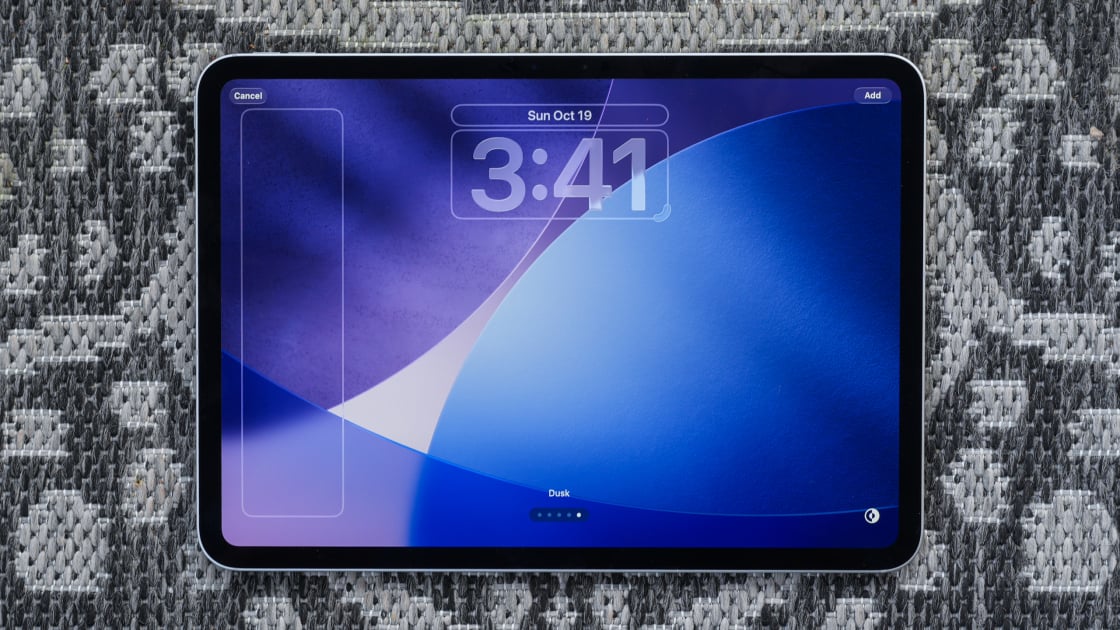Apple’s M5 chip is the 2025 iPad Pro’s biggest upgrade over its M4-based predecessor. This new Apple silicon is based on the company’s third-generation 3nm technology. The M5 comes in two base configurations. Both models have a 10-core GPU with Neural Accelerators and a 16-core NPU (Neural Engine). One M5 variant has a nine-core CPU, and the other has a 10-core CPU.
Several things are worth pointing out here. The GPU’s Neural Accelerators help turbo-charge graphics tasks and processes. This is where I saw the biggest gains in the chip’s performance year over year. Further, the new chip supports a memory bandwidth of up to 153Gbps, where the M4 supported a memory bandwidth of up to 120Gbps. The iPad Pro ships with faster RAM and faster storage, which Apple says boosts read/write speeds by a factor of two.
There are a huge number of iPad Pro versions to pick from. Importantly, the 256GB and 512GB models come with 12GB of RAM, while the 1TB and 2TB models come with 16GB of RAM. The old M4 models started with 8GB of RAM. The 11-inch M5 iPad Pro costs $999 (256GB), $1,199 (512GB), $1,599 (1TB), and $1,999 (2TB), while the 13-inch model costs $1,299 (256GB), $1,499 (512GB), $1,899 (1TB), and $2,299 (2TB). If you want 5G, add $200. If you want the nanotexture glass, add another $100 to the 1TB and 2TB models. You can top out at $2,599, which is more than many versions of the MacBook Pro cost.
I received the 11-inch model with a nine-core CPU, 12GB of RAM, 512GB of storage, and 5G, but no nanotexture glass (for a total price of $1,399).
Starting with some benchmarks, the M5 iPad Pro does show improvement over the M4 model. At a glance, our results reveal that CPU speeds are faster but not stunningly so, while the GPU and graphics make a huge leap.

(Credit: 3DMark/AnTuTu/PCMag)
Starting with Geekbench 6, the M5 model scored 4,141 on the single-core test and 15,490 on the multi-core test, while the M4 model scored 3,679 and 14,647, respectively. The M3-based iPad Air scored 3,001 and 10,839. The Samsung Galaxy Tab S11, which uses a MediaTek 9400+ processor, scored 2,773 and 9,091 on the same test.
Moving on to GFXBench, the M5 iPad ran the Aztec Ruins (High Tier) test with a total of 5,939 frames at 92.4 frames per second (fps). That compares favorably with the M4’s 3,858 frames at 60fps, the M3 Air’s 3,768 frames at 58.6fps, and the Tab S11 Ultra’s 81fps.
I also run 3DMark’s WildLife Extreme test on Apple devices. In this benchmark, the M5 iPad scored 10,929 at 65.4fps—higher than 99% of devices tested on 3DMark. The M4 iPad reached 8,597 total frames at 51.5fps, and the M3 Air hit 6,535 frames at 39.1fps.
Last, I checked AnTuTu. The M5 hit 3,416,162, the highest score I’ve ever seen, while the M4 iPad hit 2,746,950, and the M3 Air scored 2,110,706.
As you can see, the M5 iPad Pro demonstrates a considerable jump in graphics performance across these tests. It posts significantly higher scores than competing iPads and Android tablets. What does this mean in the real world? The tablet is simply the quickest and most powerful you can buy right now. I ran a number of challenging apps, including GarageBand and Lightroom, where I edited a huge album with 1,500 photos. Apple’s AI-based Playground app runs far faster than it does on anything but the iPhone Pro Max 17, which has the company’s A19 Pro chip. Even editing your pictures in Apple Photos, particularly AI-dependent tasks like removing background objects, is fluid and smooth.
This article was published by WTVG on 2025-10-21 09:00:00
View Original Post





